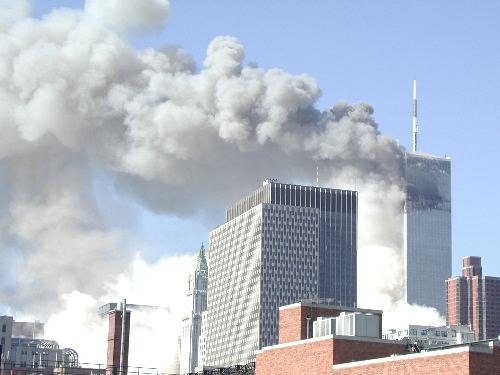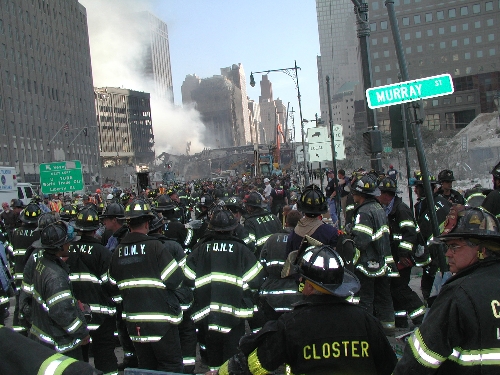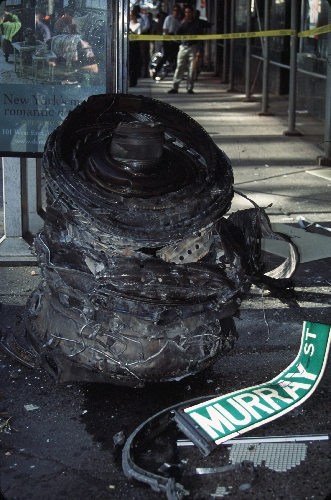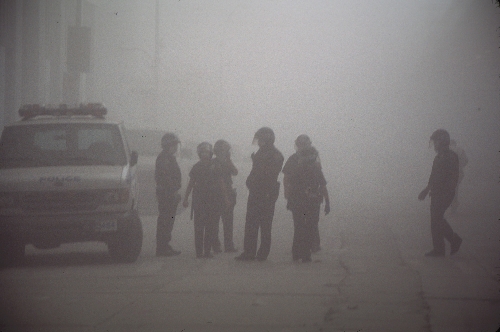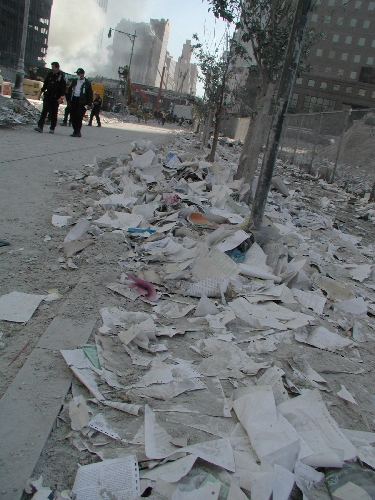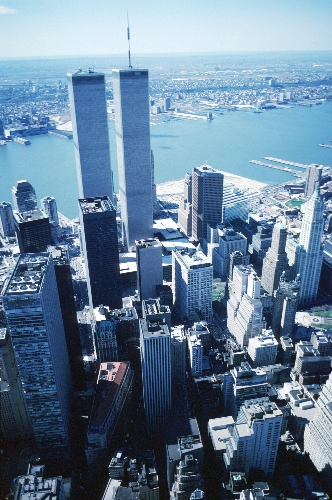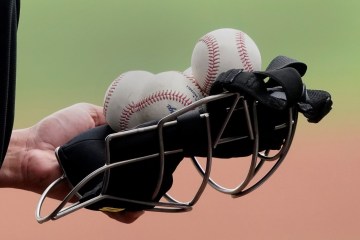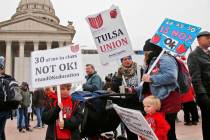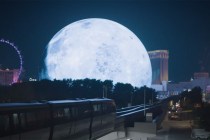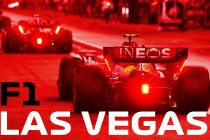Sunrise-area photographers and responder share 9/11 experiences
Their home on the foothills of Frenchman Mountain is a long way from the East Coast, but Sunday it's likely that their thoughts will be right back in New York City reflecting on that strange and terrible day 10 years ago.
On the morning of Sept. 11, 2001, Don and Noriko Carroll woke to the sounds of construction as they had for days. They lived in the heart of Little Italy, in New York City, just a 25-minute stroll from the World Trade Center, and workers were preparing their neighborhood for the Feast of San Gennaro, scheduled to begin on Sept. 13. The festival usually drew several thousand people each night for eight days.
Noriko Carroll was in the shower when her husband flipped on the TV as he pulled on his boots. The screen showed a close-up of a high-rise building, and Don Carroll assumed it was the film, "The Towering Inferno." Then the camera pulled back, and he recognized the building. With only one boot on he ran to the window and saw the image from the TV in the real world. He shouted, "The terrorists have hit the World Trade Center with a plane!"
The Carrolls ran a photography business from their home and had lived in the city for some time. They had been near the World Trade Center when it was attacked in 1993 with a bomb. Don Carroll had surmised then that the building was safe unless a plane crashed into it and had said so to his wife.
They ran up to their third-floor photo studio, which had a view of both towers. Noriko Carroll had just reached the point where she could see the second tower, when flight 175 struck it.
"I couldn't see the plane; there was a building in the way," she said. "I just saw the orange light of the explosion."
They worked their way to the roof by climbing a fire escape, pushing open a skylight and climbing a steel ladder. It was there that Don Carroll told his wife, "I have to go there." She knew him well enough to know that was true.
Don Carroll had spent most of his life as a freelance photographer shooting pictures for international magazines including National Geographic and Vogue. He had braved volcanoes, sharks and wars to get the right photo. He knew that this was a critical moment, and he had to shoot it.
"I grabbed a couple cameras, a few lenses and a pocket full of film and started running toward West Broadway in my cowboy boots," Don Carroll said. "If I'd had my running shoes, I might not be here today. I probably would have got there before the cordons went up."
From West Broadway he had a clear view down to the towers. At Warren Street, four blocks from the World Trade Center, he ran into George Stephanopoulos, former member of the Clinton administration and by then with ABC News. Stephanopoulos had been in the subway on his way to the center when the attacks occurred and was one of the many faces who told the story while it was happening.
Don Carroll managed to get one block closer, to Murray Street, when he encountered a police line and the surreal sight of an airplane engine lying on the road.
He realized he'd left his press pass at home and knew he wasn't going to be able to talk his way through the line, so he took a left, trying to get around the cordon. He got as far as New York City landmark J & R Music where he was stymied by another police cordon.
"If I'd had my press pass I would have been in there," he said. "In the heat of the thing you become blinded to the real dangers of it. You're impervious somehow because you're behind the camera. It's like a shield."
Carroll was at the police line, shooting past an officer who was holding him back when he saw tower two, the second to have been hit, but the first to fall, coming down.
"As a news photographer, you're an observer," Carroll said. "You're not really having all the emotions because you're looking at it all through a view finder."
Almost a mile away, in the third floor of their apartment, Noriko Carroll shot pictures of the tower collapsing. It was over in seconds, and then, where the tower had been, she saw blue sky.
"After they went down, there was just a void," she said. "I couldn't see the smoke and dust because buildings blocked the view. I didn't know where Don was. I didn't know how close he had gotten."
Don Carroll watched the building collapse and shouted to the policeman in front of him.
"He looked back and then just started running straight past me away from the debris cloud," Carroll said. "That famous shot of all those people running with the debris field behind them, I'm one of them. We were boogieing, because that cloud was coming right at us, and God knows what was in it."
Carroll recalls running about half a block and ducking around a corner right before the debris cloud whooshed by. He tore the sleeve off of his shirt and fashioned it into a makeshift mask. His camera had run out of film, and he replaced it by holding it lens up, popping the back and slapping in another roll. Miraculously, the roll caught and none of the grit that filled the air made it into the guts of the camera.
He made his way into nearby Pace University, pushing his way past 2,000 students and commandeering an administrator's phone to call his wife and let her know he was OK.
"I was back outside when the other tower fell," Carroll said. "By that time I figured there was nothing else I could do."
He walked home, cleaned up and took his film to the lab to be developed. Among the photos in their stock photo catalog were several iconic shots of the Twin Towers. Noriko Carroll spent much of the afternoon fielding calls about their use and sending out high-resolution shots without charge.
"I couldn't think about money then," she said. "It just didn't seem right."
All traffic was shut down south of 14th Street, and Don and Noriko Carroll went from the noise of construction to the chaos of the attacks to a strange silence.
"There were no cars, just people walking away from the towers," Noriko Carroll said. "It was so quiet and eerie."
Don Carroll returned to the World Trade Center site the next day, but this time he didn't bring a camera. He wore work boots and a hard hat and carried a big crowbar and a flashlight and became one of the many who worked on the rescue and recovery process.
"Everyone wanted to help," he said. "I knew sculptors who came down with their cutting torches and pitched in."
A few days into the recovery process, Nevada Task Force One, an urban search and rescue team, reached the site. Karl Lee, currently a fire logistics officer with the Clark County Fire Department, was task force leader of the organization at the time.
"We were there during the transition from rescue to recovery mode," Lee said. "You didn't want to say anything about the chances of survivability, but it was understood.
Nevada Task Force One has dogs trained to sniff live humans in rubble. In 2001, it didn't and instead brought Metro canine officers and their dogs.
"Those dogs were used quite extensively, because a lot of the other dogs couldn't stand to be on the pile for a long time," Lee said. "There was a lot of heat there from the underground fires. Our dogs were used to the heat."
The team also brought engineers, who helped to quickly and safely dismantle rubble piles as part of the rescue and recovery effort. Lee remembers it as an intense and emotional time.
"The night we got there we were fortunate enough to see someone being rescued from the pile," he said. "All work stopped. Everyone was silent. Everyone lined up as they brought out a flag-draped stretcher."
Lee, like many firemen, knew some of those lost in the attacks.
"The brotherhood of firefighters is close," he said. "You end up knowing a lot of people, and you feel for their families."
The Carrolls moved out of New York the following year.
"The whole feeling of Lower Manhattan changed," Don Carroll said. "It was like the whole personality changed."
They still take photos, but these days they tend toward more placid subjects. They wrote the book "First Flight: A Mother Hummingbird's Story" and made a film by the same title about the hummingbirds in their backyard. The film is winning awards in festivals across the world.
Lee was quick to point out the large number of 9/11 memorial events planned for the weekend but thinks he'll probably spent the day quietly, perhaps touching base with people back east.
"I think I'll just be reflecting on it," he said.
Contact Sunrise/Whitney View reporter F. Andrew Taylor at ataylor@viewnews.com or 380-4532.
Sunrise Residents Share Poems Inspired by Disaster
I responded to a friend's call to turn on my t.v.
I had trouble believing the horror I would see.
How could such a thing happen right before my eyes
That terrorists were involved such a sad surprise!
I sat and watched the time fly by the tragedy to unfold
And saw those young firemen and police to the rescue so bold!
I wanted so much to hear a bulletin "hundreds found alive"
I craved to hear the stories of how they managed to survive.
But when the horror ended and so many lives were lost
My heart went out to those heroes oh, such a mighty cost!
I decided to let my local firemen heroes know
How much I admired them and my gratitude I'd show.
Just a little thing I felt would satisfy my need
To say "thank you" for all they do in my small way, indeed.
Since then I make a practice of baking or selecting goodies just for them
Every couple of months I deliver to my three local stations' firemen.
I always tell them I hope to never see them professionally
But I am so happy to know that they are here for me!
Contributed by Sunrise/Whitney reader Jo Ann Mueller.
A Day to Never Forget: Sept. 11, 2001
It was a day like no other, a day I can never forget:
The day that my heart broke when the Pentagon and Twin Towers were hit.
It happened on a beautiful fall morning and I saw it on TV.
I saw the Towers collapse, the smoke, the horror -- it terrified me.
It must be a nightmare, I thought. How could this be real?
How could this happen in our Country? How could this happen HERE??
It was a day full of sorrow, a day I stayed by the telephone and TV.
I had to call all my friends and family to calm the fears inside of me.
I'll never forget the heroes and how so many lost their lives.
I can't seem to erase the image of the horrified people who perished in the high-rise.
Today on the tenth anniversary, I am still haunted by what happened.
How could anyone do something as horrific and evil? Who could have committed this sin?
Please tell me it was all just a bad dream, that I'll wake up and it will all be OK.
How can I tell my 5-year-old daughter about what happened that day?
Maybe I'll just wait until a day she can understand.
But will there ever be a time that any of us can?
Contributed by Sunrise/Whitney View reader Debra S. Gardiner




